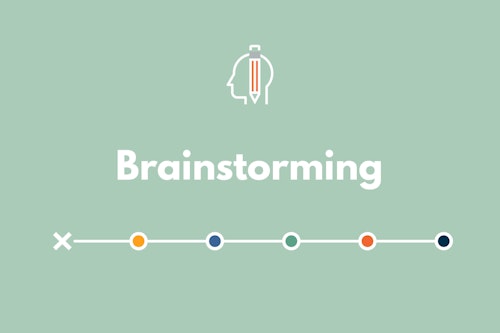Brainstorming

Brainstorming is a way to come up with a quantity and breadth of ideas that you would not be able to generate by just sitting down solo with a pen and paper. The ideas is to leverage the collective thinking of the group by engaging with each other, listening, and building other ideas.
Brainstorming should be used when you need to get a group’s “rough draft thinking.” Just like when writing a report or memo, you’ll go through several drafts—same with brainstorming. You’re generating peoples’ rough draft ideas for:
- Solutions to problems;
- New initiatives;
- Underlying issues;
- Building teamwork;
- Discovering obstacles to meeting goals;
- Sources of inspiration; and
- Many other topics
Successful brainstorming requires adherence to one key rule:
-
Suspend Judgement – Rough draft thinking needs encouragement, not evaluation. Premature criticism may discourage people from trying and may make them unwilling to volunteer their rough draft thinking. Participants need to suspend judgement.
- Every contribution is worthwhile: don’t evaluate other ideas, and don’t censor your own ideas. If judgement comes up, save those thoughts for later discussion.
- Suspended judgement is temporary, not permanent—you’re just being asked to set your judgment aside.
- You don’t have to “let go” of anything – just make room for other people to express their ideas.
- Suspended judgement encourages creative thinking—see what your imagination produces.
The Process
What you’ll need: with a group—markers or pens, sticky notes, a wall or door; if you’re brainstorming by yourself, you only need a pen and paper.
1. Explain the guidelines of a brainstorm to the group:
- No idea is a bad idea;
- Suspend judgment;
- Quantity over quality, there’ll be time to critique ideas later
2. State the group’s task in the form or a question
3. Everyone writes their ideas on a sticky note, says their idea, and places the note on the wall or door.
Don’t worry if people start to slow down – they’re likely thinking. The obvious ideas have already been said. Pressuring the group to keep ideas coming may stall or stop their thinking. Respect the silence.
We consider brainstorming a basic tool because if you know how and why to use it, many other tools immediately become available and possible. This is a great time to jump ahead and look at the possibilities:
- Tool 1
- Tool 2
- Tool 3
- Tool 4
What do all of these tools have in common? They involve some form of brainstorm.


